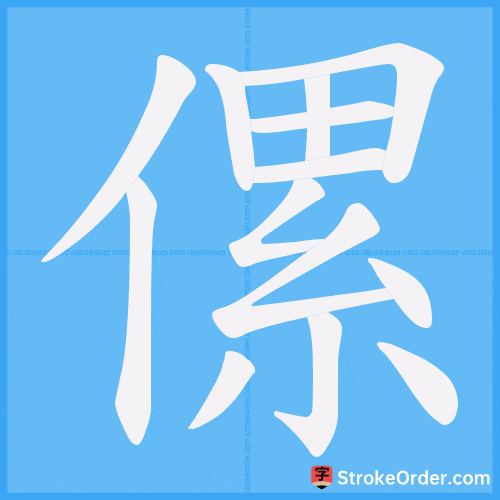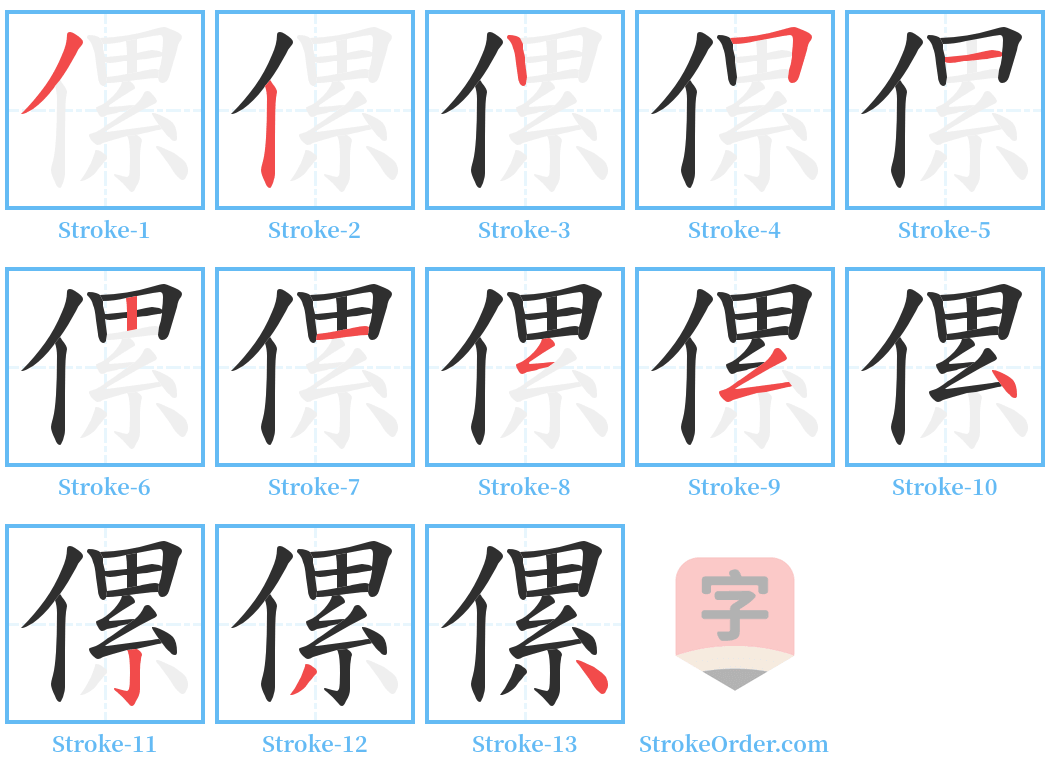傫 Stroke Order
Animated Stroke Order of 傫

Stroke Order Diagrams for 傫

Information of 傫
Pinyin
lěi
Radical
亻
Strokes
13 strokes
Usage
★★
Definition
Definition of 「傫」:
1. Bind or tie up.
2. In ancient usage, it refers to something that is repetitive, indicating a state of dejection.
3. A surname.
形 (Adjective):
1. Tired; same as "傫."
- Example: "儽,劳也。" — "Guangya: Explained terms."
2. Depressed.
- Example: "傫傫兮若无所归。" — "Laozi."
- Illustrations:
- "傫如丧狗" (Describes a person in despair with a dejected spirit);
- "傫然" (Appearance of dejection);
- "傫傫" (Appearance of being dejected and lost).
动 (Verb):
1. Same as "累"; meaning to pile up or accumulate.
- Example: "今之傫然在墓者也。" — "Ming: Zhang Pu, 'Five-person Tombstone Record.'"
- Illustrations:
- "傫然" (Describes something that is layered or piled up).
Additional details:
- 形 (Adjective):
1. Tired; same as "傫."
- Reference: 《广雅·释诂二》: "儽,劳也."
2. Depressed:
- Reference: 《老子》: "傫傫兮若无所归."
- Examples:
- "傫如丧狗" (Indicates someone who is depressed);
- "傫然" (Describing dejected appearance);
- "傫傫" (Describing a look of despair).
- 动 (Verb):
1. Same as "累"; to pile up.
- Reference: "明·张溥《五人墓碑记》: '今之傫然在墓者也.'"
- Example:
- "傫然" (Describing something that is stacked or heaped).